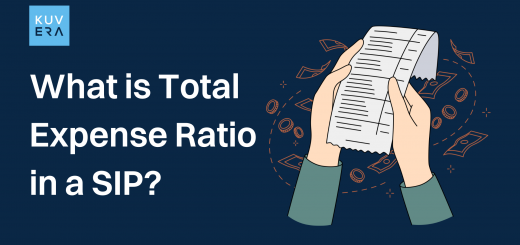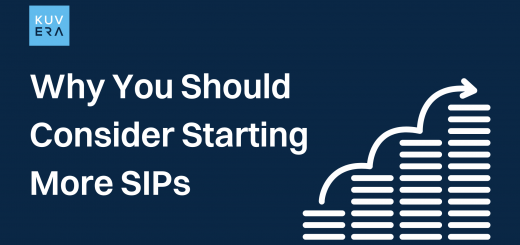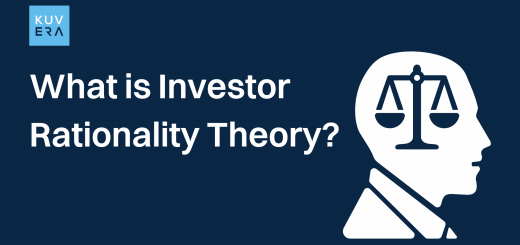Inflation has not been this high in decades, and investment portfolios are no longer what they once were. Bonds are the reliable standby of a balanced investing plan. The worst inflation since the 1980s indicates that now is a fantastic time to learn about bond investment if you were previously unaware.
Since the new year, the turbulent stock market has been affected by Russia’s attack on Ukraine. The majority of investors must accept the reality that they will not see the same growth as in the past.
Bonds are straightforward financial securities that may yield profits for investors, despite the bond market is seeming complexity.
What are Bonds?
A bond is a sort of debt or loan that the public grants to firms or the government. In exchange, the borrower or bond issuer promises to pay a predetermined interest rate and repay the borrowed funds at maturity.
Since the issuer is required to refund the principal at maturity, bonds are seen as a safe investment. Typically, a bond is secured by collateral. A significant reason for the popularity of bonds is the bondholder’s priority claim on the company’s assets in the event of bankruptcy. Even during profit distribution, bondholders are given priority over equity stockholders.
Types of Bonds
Now that you are aware of what bonds are, let’s explore the various types of bonds in India:
- Central Government Bonds
Government bonds have existed for the ages. Venice used to issue government bonds in the past to pay for its battles. Today, central banks throughout the world use the same procedure for issuing bonds. The Reserve Bank of India (RBI) of India issues these bonds on behalf of the national government. They have a greater than 10-year maturity period.
Central government bonds have a sovereign guarantee since they are issued by the government. They are hence among the safest kind of bonds. The lengthy maturity duration of these bonds, however, exposes them to the danger of inflation. This indicates that there is a chance that, in the future, the inflation rate will exceed the returns provided by your bond.
Institutional investors such as debt mutual funds, insurance corporations, etc. typically buy central government bonds. Nevertheless, utilising the GoBid website from the National Stock Exchange, even individual investors can purchase central government bonds.
The table below displays some current government bonds.
| Central Government Bonds | Coupon Rate | Issue Date | Maturity Date |
| 10.18 % GOI BOND 2026 | 10.18% | 11-09-2021 | 11-09-2026 |
| 8.35 % GOI BOND 2022 | 8.35% | 14-05-2002 | 14-05-2022 |
| 7.95 % GOI BOND 2032 | 7.95% | 28-08-2002 | 28-08-2032 |
- State government bonds- State government bonds are sometimes called state development loans (SDLs). State governments issue them to support infrastructure or liquidity needs, etc. Below is a list of some state bonds in circulation.
| State Government Bonds | Issued by | Coupon Rate | Issue Date | Maturity Date |
| 8.31% West Bengal SDL 2025 | West Bengal Government | 8.31% | 29-07-2015 | 29-07-2025 |
| 8.61% Uttar Pradesh SPL Bond 2028 | Uttar Pradesh Government | 8.61% | 04-10-2014 | 04-10-2028 |
| 8.27% Tamil Nadu SDL 2025 | Tamil Nadu Government | 8.27% | 11-08-2015 | 12-08-2025 |
| 8.26% Maharashtra SDL 2025 | Maharashtra Government | 8.26% | 12-08-2015 | 12-08-2025 |
- Public Sector Bonds- Public sector units (PSUs) can also generate money from the general public by issuing bonds known as “Public Sector Bonds,” much like the central and state governments can. Top public sector businesses and organisations typically issue these bonds to finance their development and growth needs. Compared to corporate bonds, they carry comparatively less risk.
Some of the public sector bonds that are presently circulating are included in the table below:
| Public Sector Bonds | Issuing Entity | Coupon Rate | Face Value | Credit rating |
| Power Grid Corporation of India Ltd 8.84% | Power Grid Corporation of India Ltd | 8.84% | Rs 12.50 lakhs | AAA |
| National Highway Authority of India Ltd 7.04% | National Highway Authority of India Ltd | 7.04% | Rs 1,000 | AAA |
| Indian Railways Finance Corporation 8.65% | Indian Railways Finance Corporation Ltd. | 8.65% | Rs 10 lakhs | AAA |
| Himachal Pradesh State Electricity Board Ltd. 10.39% | Himachal Pradesh State Electricity Board Ltd | 10.39% | Rs 10 lakhs | Sovereign |
- Corporate bonds-Private corporations issue corporate bonds. They make up a sizable share of the Indian bond market. Companies may easily raise funds by issuing corporate bonds. Since there is no dilution of equity capital, this is preferable to issuing new shares. Corporate bonds often have higher coupon rates than government bonds since they are more likely to experience a default. Corporate bonds can involve inflation risk and reinvestment risk in addition to credit risk.
A few corporate bonds that are currently circulating are included in the table below.
| Corporate Bond | Issuing Company | Coupon Rate | Credit Rating |
| Fullerton India Credit Company Ltd 10.50% | Fullerton India Credit Company Ltd | 10.50% | AAA |
| Coastal Gujarat Power Ltd 9.70% | Coastal Gujarat Power Ltd | 9.70% | AA |
| Torrent Power Ltd 8.95% | Torrent Power Ltd | 8.95% | AA- |
Corporate bonds can also be categorised as follows:
- Convertible bonds: In a specific ratio, these bonds can be exchanged into equity shares. When a bond matures, for instance, if its conversion ratio is 2:1, you will receive two equity shares in return for one bond.
- Non-convertible bonds: Bonds that cannot be converted into equity shares are known as non-convertible bonds. When the bond reaches maturity, the principal is returned to the bondholder, and the deal is over.
Types of Bonds Based on Coupon or Interest
- Fixed rate bonds: These bonds pay constant coupon rates over the course of their life.
- Floating rate bond: A floating rate bond has varying coupon rates, thus its interest income varies regularly.
- Zero coupon bond: Bonds with zero coupon payments are referred to as zero coupon bonds (interest). In its place, they are sold for less than their face value and redeemed for face value. Profit for investors is calculated as the difference between the two prices.
- Inflation-indexed bond: Bonds with an inflation index are those whose principal and interest payments are based on the rate of inflation in the overall economy. They aid in your pursuit of a positive real rate of return.
Bond Types Based on Put and Call Options
Callable Bonds:
The issuer of these bonds has the option to buy back the bond from the investor before the bond’s maturity date. The borrower often does this to refinance a large amount of debt.
Puttable Bonds:
Investors in these bonds have the option to sell or return their bonds to the borrower before the due date. When an investor is unable to sell the bond on the secondary bond market.
Bond Types Based on Taxation
- Tax-free bonds
Governmental organisations issue these to generate money for a future project. Popular companies that issue tax-free bonds include:
- Indian Railways Finance Corporation (IRFC)
- The Rural Electrification Corporation (REC)
- National Highways Association of India (NHAI)
Section 10 of the Income Tax Act of India, 1961 exempts interest received on tax-free bonds.
- Reserve Bank of India Bonds (Floating Rate Saving Bonds):
The Reserve Bank of India (RBI) issues these, which are also known as RBI taxable bonds. They have a maturity duration of seven years and the interest rate changes every six months. You may invest in these bonds with as little as Rs 1,000 and there is no maximum investment restriction. The interest on these bonds will be taxed according to your income bracket.
Sovereign Gold Bonds are another popular form of bond in India (SGBs). They are issued by the Indian central government for people who want to invest in gold. The bond pays a fixed 2.5% annual interest rate and has an eight-year maturity period.
Advantages and Disadvantages of Bonds:
Advantages of Bonds:
Bonds have several advantages, including set yields and monthly interest payments. The following are some of the most prevalent advantages of acquiring bonds.
- Consistent Returns on Investment
Bond investments pay out steady interest at regular times. In addition, when a bond matures, you receive the original principal amount deposited. The main benefit of investing in bonds is that investors know precisely how much the returns will be.
- Less risky
Although both bonds and stocks are securities, the primary distinction between the two is that the former mature after a certain length of time, whilst the latter often remains outstanding indefinitely. In addition, in the event of liquidity, bondholders are paid first, followed by shareholders.
- It is less volatile
Bond investing is safer than investing in the stock market, which also has various hazards. Although the value of a bond might change due to current interest rates or inflation rates, they are typically more stable than stocks.
- Unambiguous Rating
Bonds, unlike stocks, are uniformly graded by credit rating organisations. This provides further assurance to investors regarding the appropriate timing to invest in bonds. You can acquire bonds from any issuer with a higher face value based on clear ratings. However, before investing, you should perform your investigation.
Disadvantages of Bond:
- If you purchase a bond on the secondary market for a premium, your YTM will be lower.
- If the company’s financial state is poor, it will be difficult to find purchasers for the bond market.
- Bonds are less liquid than equities.
Who should invest in Bonds?
Bonds are not exclusively for older people or risk-averse investors. Every investor needs to buy high-quality bonds. They can use this to balance off the high risk of stocks. But your risk appetite and time horizon should be taken into account when allocating bonds to your portfolio. The 100 minus your age formula might also be used by investors to determine their allocation of stocks and bonds.
- Seniors or retirees may allocate 50% of their wealth to bonds.
- Aged 25–40 investors can allocate 20%–30% to bonds and the remaining amount to stocks.
Things to consider before investing in bonds?
It’s critical to comprehend how bonds operate, the risks associated with holding them, and their capacity to provide the returns an investor expects before investing in bonds. We’ve outlined several important elements to think about while investing in bonds.
- Creditworthiness
One of the biggest risks you face is the issuer defaulting on payments. The default may take the shape of late coupon payments or failure to pay the principal when it is due. The rating given to the bond by approved agencies using a rating scale can be used to determine the likelihood of default. Better credit quality (the company’s capacity to pay) is shown at the higher end of the scale, which reduces the likelihood of default. The lower end denotes subpar quality and increased default risk.
- Look past ratings
Not all bond-related risks are taken into consideration by ratings. You might face new risks after buying the bond. For instance, if an issuer chooses to pursue an acquisition or engage in any other form of restructuring, their debt load will rise. This will have an impact on the issuer’s capacity to pay the debt associated with the current bonds, raising the risk level of the bond you are holding. This will therefore cause the bond’s price to decline. Avoid buying bonds from companies whose income is trending downward and whose debt load is rising.
- Exit options
Before purchasing corporate bonds, take into account your need for liquidity and match your investment horizon to the bond’s maturity length, which is often between 5 and 10 years. Bonds sold too soon could expose you to interest rate volatility. For instance, as interest rates rise, new bonds begin to offer interest rates that are greater than those of old bonds. In this case, if you decide to sell your current bond, you will need to sell it for less money in order to make up for the reduced coupon that the buyer would get.
- Risk-return balance
There is no general method that can be used to predict the precise return that a certain bond will bring in. To get at a decent estimate, you might contrast instruments with similar ratings on the bond market. The industry in which a corporation works and the market perception of that industry can both affect a bond’s yield.
- Avoid complicated bonds
You may be exposed to increased risks as a result of additional features like call and put options. A call option, for instance, enables the issuer to purchase the bonds before they mature after a specific time period determined by the corporation. In an economy with dropping interest rates, this can work against you. Even if the interest rate decreases, the issuer will continue to pay you a greater coupon rate than the going bond market rate. Because of this, the issuer can opt to purchase your high-coupon bonds back and issue new bonds with lower coupon rates. You are then left with money that can only be invested at the current low rate as a result of the procedure. In a similar situation, a put option that allows you to return the bonds to the issuing business before they mature can be advantageous for you.
Why Should You Bother About Bonds during Inflation?
When the current inflation rate is higher than the coupon rate that issuers are willing to give, bonds are vulnerable to inflation concerns. Due to the effect of inflation on the invested principle value, debt instruments that pay fixed interest also run the risk of depreciation.
The truth is that investing in bonds, especially long-term bonds, is not the greatest course of action in an environment marked by increasing rates and inflation. However, certain bonds can withstand this kind of environment rather well. Bonds can still have a benefit when employed as a diversification strategy in a larger portfolio, even if their projected return is minimal.
FAQs
-
What is the maturity of a bond?
Maturity is the day that the bond issuer pays back the money that bond buyers lent them. Bond maturities can be short, medium, or lengthy.
-
What is face value of bonds?
Face value is the sum that your bond will be worth when it matures. The face value of a bond serves as the foundation for determining the interest payments owed to bondholders.
-
What is coupon?
The issuer of the bond will pay its bondholders a certain interest rate.
-
What is Yield?
Yield is the bond’s return percentage. While the yield is changeable and influenced by a secondary bond market price and other circumstances, the coupon is fixed. Current yield, yield to maturity, and yield to call are all ways to convey yield.
-
What is Duration Risk?
Duration risk is a gauge of how a bond’s price may alter in response to changes in bond market interest rates. According to experts, a bond’s price will drop 1% for every 1% increase in interest rates. A bond’s price is more sensitive to fluctuations in interest rates the longer its tenure.
Interested in how we think about the markets?
Read more: Zen And The Art Of Investing
Watch/hear on YouTube:
Start investing through a platform that brings goal planning and investing to your fingertips. Visit Kuvera.in to discover Direct Plans and Fixed Deposits and start investing today.
#MutualFundSahiHai #KuveraSabseSahiHai!











